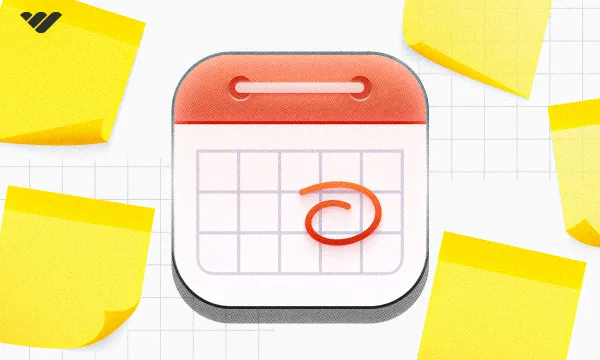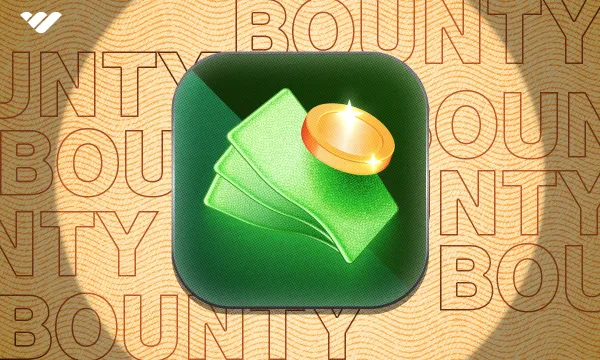Setting up your own whop already puts you on the way to making some serious bucks. Your products are out there, getting seen and earning you money. With those first crucial steps out of the way, it's time to start thinking about marketing your whop.
One way to get your whop seen by more pairs of eyes is to apply to the Whop Marketplace, but this is just the beginning. There are lots of ways to advertise your whop, from organic marketing to targeted campaigns.
More views mean more sales, and we're here to help you achieve that. Below, we'll take you through 9 tried-and-tested marketing strategies that will help your whop shine.
Market Your Whop In 9 Steps
Marketing your community isn't something you need to rush into. You can start out small and expand as your whop grows, or you can go all-out and get yourself more customers in record time. No matter your digital product strategy, these 9 steps are bound to help you get there.
1. Understand your customer
Before you can be good at marketing your whop, you have to know that you’re marketing to the right person. The best sales pitch in the world will fall flat to someone who has no use for what you’re offering, after all.
Fortunately, you already have a fantastic resource for learning all about your customers: your very own whop. The people who already bought your products and services are right there, and if you approach them the right way, you’ll get some invaluable information.
So, how do you go about getting some juicy details on your customer base? The best way is to find out directly from the source, so you can try the following:
- Post a survey in your whop community. This is a great thing for two reasons. One, you'll get the intel that you need and get your questions answered. Two, surveys are a quick way to interact with your audience and keep them engaged.
- Run a Q&A session. Use the Video Calls app in your whop to set up a Q&A live session. Your customers will love it, especially if you also spend a bit of time answering pressing questions. Meanwhile, you can ask questions and get feedback in real time.
- Make a post and ask them. Using the Forums app, reach out to your customers directly and gather information, such as by asking them why they joined your whop and what their goals are.
- Study your Dashboard. Your very own hub is where all the key information on your customers resides. In your hub, navigate to the Dashboard on the left-hand side of the page, and get all the customer insights you need for our next steps.
- Offer exclusive prizes. Invite the members of your community to speak up and answer some of your questions. Run a prize draw in return to keep things exciting. People are likely to participate if the prizes are enticing, such as a one-on-one coaching call with you at a time that works for you.
2. Create your target audience

Congratulations—you've just gathered a boatload of useful intel on your customers. With that in your arsenal, you're ready to create your ideal target audience.
Why is this useful? It's simple—the more you know about your customers, the easier it gets to tailor your products to match what they're looking for. It doesn't matter if you're selling courses, ebooks, SaaS, or a mix of many useful digital products. As long as you niche down and identify customer pain points, you'll benefit from organic marketing (which is often the best kind, because it doesn't cost you extra).
To create your ideal audience, consider the mission of your whop. What's your goal? Where do you see your business in a month? What about a year? (Those "where do you see yourself in x years" questions are a massive pain during job interviews, but they're great for entrepreneurs trying to find the right path.)
Next, write out every little thing you can think of about your customers. Based on the data you've gathered, and the goals you want to reach, ask yourself a few key questions.
Remember, this is about your ideal target audience, which won't necessarily completely overlap with your existing customer base.
- Where are they from?
- What age are they?
- What’s their gender?
- What level of education do they have?
- What’s their occupation?
- What kind of income do they make?
- What are their interests and hobbies?
- What appeals to them?
- What are they struggling with?
- What are they hoping to achieve with your help?
We're about to put those answers to good use in step 3.
3. Define what makes your whop stand out
Now you need to figure out what is going to make you stand out to this ideal customer. The key to this is your Unique Selling Proposition, or USP, which encompasses the specific qualities and features that set you apart from others, on the Whop Marketplace and everywhere else on the internet.
When thinking about your USP, there are three main things to consider.
- What makes you stand out?
- Who is going to benefit most from your whop and all the fantastic products that you're selling?
- Why do customers choose you over your direct competitors?
Answering those three questions is just the tip of this big USP-shaped iceberg. The goal is to figure out some of the following:
- Identify your exact niche. Let's say you're running an online fitness community. Are your customers interested in all things fitness, or do you want to niche down and offer specific help for certain groups of people, such as weight loss advice or pregnancy yoga?
- Think about customer engagement. What do you do that's different from other Whop users? Is there a lot of community interaction?
- Do you offer any exclusive content that other people in your niche don't? If this is your USP, it might be worth it to keep adding more of those extra types of content, such as ebooks or downloadable templates.
- Are you an expert in your niche? If you have built yourself a strong brand, sales will be easier to score. If you have any relevant certifications, testimonials, or a social media presence, all of that adds to your USP.
- Does your whop offer extra flexibility? For example, if you use multiple pricing strategies all at once, your customers might have an easier time buying your products than if you were to stick to a single payment option.
Explore the idea of your USP and try to define what makes your whop one of a kind.
4. Refine your branding
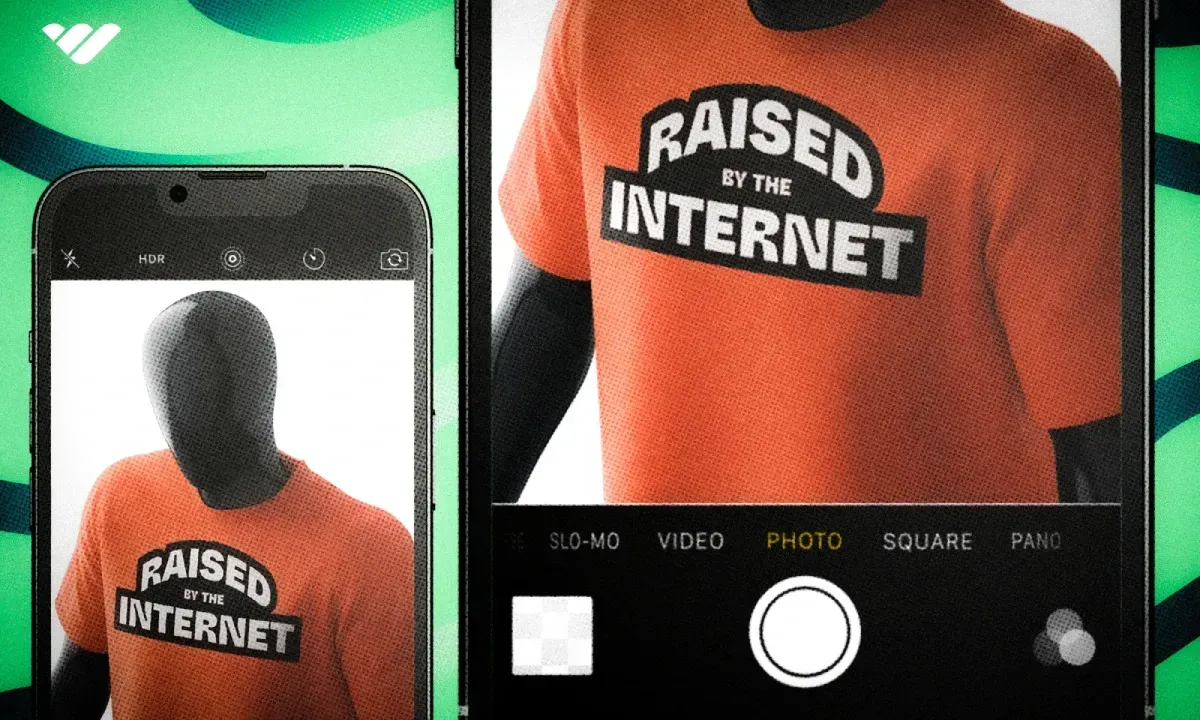
Allow me to clarify—I didn't make you gather all that data and do all that thinking for nothing. All that analysis you're doing is about to pay off, because now, it's time to refine your branding.
Let's circle back to that example from a few paragraphs ago. If you're running your fitness business on Whop and you're offering a little bit of everything for everyone, you're putting yourself in a position where you'll have a lot of competitors. There will always be other people offering general fitness advice for everyone, after all.
Defining what you're best at and what your audience wants from you means having fewer creators to compete with, and that's a good place to be. Besides, refining your branding to align with your content and with your target audience makes your marketing strategy both transparent and effective.
One way to go about this is to think of it like your customers have a problem, and you’re providing the solution. Use what you learned from market research, and apply that to your branding. Figure out how your solution is better than the competition and use that knowledge in every marketing move you make.
Other than deciding on the very foundations of your whop, you can refine your branding in other ways that are more visible to your customers. For example:
- Create a visual identity (colors, logos, and other assets—all of those should be the same across your whop and your digital products)
- Refine your messaging to align with what your audience is looking for
- Keep your branding consistent even across multiple platforms, such as your whop and your social media profiles
Remember that branding iteration is an ongoing process. It's not a one-and-done sort of thing, and nothing is ever fully final, so you can go back and tweak things if needed. However, I don't recommend rebranding too often, as that will just confuse your audience. Smaller changes trump big overhauls each and every time!
5. Choose your marketing avenues
Having a marketing battle plan is one thing, but it's also important to figure out where to fight those battles. Your marketing avenues matter just as much as your strategy does, and choosing the right platform ties in with your USP and your target persona.
Let's say that your audience is mostly made up of Gen Z and Gen Alpha. Buying Facebook ads to reach those customers is often ineffective because younger people spend less time on Facebook and more time on TikTok (don't we all?).
We're not going to go into too much detail here, though. Picking the right marketing avenues is so crucial that we have a whole section dedicated to it down below, so sit tight and we'll get right back to it shortly.
6. Create your goals

Although the Saturday night version of me might tell you otherwise, everyone needs goals—especially if you're a solopreneur.
If you work a 9-to-5 job, your goals are kind of predefined and set for you. You'll have your own career goals beyond that, but most days are defined by whatever it is that your boss expects you to do that day.
As an entrepreneur, you have both the luxury and the challenge of finding your own goals. Setting clear goals will help you market your whop, too, as you'll know what you're aiming for and how to scale up once you get there.
You can do this with the SMART process:
- Specific: Your goal should be straight to the point and answer the five w’s (who, what, where, why, and how). It needs to clearly define what you want to achieve, with no ambiguities like "improve marketing."
- Measurable: Your goal needs to come with a metric for you to track it—so not just "improve marketing," but "increase sales by 10% in the first six months."
- Achievable: Realism is the key. Don’t set an impossible goal; you can always move the bar later on.
- Relevant: Your goal needs to stay in line with your marketing strategy and what you want to accomplish with your whop.
- Time-bound: Deadlines, deadlines, deadlines. Set a time frame for reaching your goal, and stick to it. Open-ended goals are goals that are always pushed to the side.
Following the SMART framework helps you create clear, actionable goals and sets you up for huge wins all across the board.
7. Decide on a budget
Now, it’s time to think about the money. That’s everyone’s favorite thing to do, right?
But this time, instead of counting all the dough that you're getting from running your own whop, think about the ways you can invest it back into your business.
Deciding on a budget to use for marketing is a meticulous process. This is also why picking the right avenues is important—with a set budget, you really don't want to be throwing money away on ads that don't help much.
Before you can determine a budget, sit down and evaluate your revenue. If you're just starting out, you may not be earning enough to run massive campaigns, but you can already start setting money aside for marketing purposes.
A common approach is to set aside a certain percentage of your revenue for marketing, such as 5% to 10%. Of course, if you have some capital to invest, that percentage can be higher for a while as you're hitting the ground running.
Here are some of the things you could be spending money on, marketing-wise. Remember: all of these are optional, and you can do a lot of the work yourself without needing to pay for it.
- Paid advertising on social media
- Content marketing (blogs, infographics, videos)
- Social media management tools
- Email marketing campaigns
- SEO services
- Event marketing (hosting and attending webinars and live events)
- Affiliate marketing (paying affiliate commissions - Whop has a built in affiliate system)
- Partnerships/sponsorships (you can pay to sponsor an event, or find other brands to create joint content initiatives)
- Teaming up with influencers
The cost of these depends on your goals and your budgetary limitations. You can research the ones that sound most useful to you and get an idea of how much they’ll cost, and then come up with a realistic marketing budget.
8. Reward your loyal members
You know how many companies often run constant promotions and discounts for new customers, but if you're already a member, you can forget ever getting anything for free? (A special hello to my internet provider here.)
No one likes that, and if you do the opposite, you'll achieve lower churn and improve your customer retention.
Your OGs will appreciate some acknowledgment and gratitude for being with you since the start. You can offer them special discounts, premium content, or host giveaways exclusive to them.
There are ways to do this even if you're on a tight budget. You can offer quick one-on-one calls, shoutouts, or even small acknowledgments on your whop or on your social media.
Another idea is to offer early access to new features, but only to your loyal members. This takes care of two things at once: They feel special for being included, and you can get their feedback and use them to beta test the feature.
Testing certain new perks and features with only a select group of customers at first is the very foundation of A/B testing, which is another great marketing strategy that's worth looking into.
9. Review, refine, and repeat!
Marketing your whop is not a one-time thing. Even if you become one of the top creators on Whop and find yourself rolling in money, all that this means is that you'll have more of a budget to spend on marketing.
Long story short, marketing is forever—but you won't have to start from scratch the way you are now. You've built a strategy, and now, you can iterate on it over and over.
Add a new bullet point to your list of goals: "review marketing strategy." Put it in your calendar; this is something you want to do often, but not too often. Reviewing your stats every two weeks will only end in frustration, but every six months is too far apart. Many creators consider a month or two the sweet spot.
Every time you go back and revisit your marketing goals and tactics, go back through our handy list of 9 steps and refine your strategies. Touch base with your customers and align your USP both with the customer base that you currently have and the one you hope to build. Most of all, see what worked and what didn't, and don't be afraid to change course if needed.
As such, it's not so much a "rinse and repeat" kind of process. It's more of a "review, think about it, strategize, make it even better, and then repeat it" kind of situation.
Where to Market Your whop
At this point, you are more than ready to tell the world about your whop. You've got all this amazing content waiting to be seen, and you also have the strategies that will help you sell it for good money.
There's one thing we've only briefly touched on, though. Where does all this marketing take place? Don't worry, we've got you covered. Here's where you can—and should—market your whop.
Marketing your whop on social media
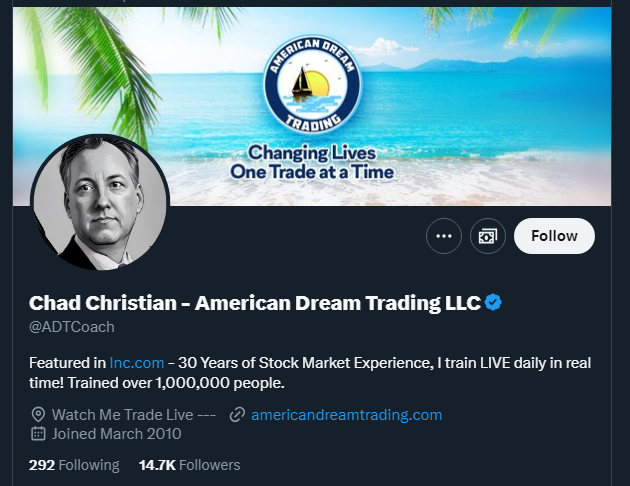
When it comes to marketing, social media is your #1 bestie. You can use it to build engagement, get people interested in your products, host giveaways, try your hand at affiliate marketing, and more.
Most of Whop's biggest creators also have active social media profiles. In the above example, the owner of American Dream Trading on Whop is also on Twitter, and the branding is consistent throughout both platforms.
The exact social media platforms that might interest you depend on your target audience. Certain whops will do well on TikTok; others will thrive on X (Twitter), Snapchat, Twitch, Facebook, Instagram, or Pinterest.
It's not a bad idea to set up a profile on each platform and maintain it for a while, but you can also just focus on the profiles that are the most likely to succeed; so, for instance, to target older millennials, hit up Facebook, and for Gen Z, Instagram, Snapchat, and TikTok tend to do better. If TikTok is your main target, we have a guide on how to go viral there, so make sure to check it out.
Below, we'll break it down into a few different options, free and paid, that can help you market your whop through your socials.
Running ads
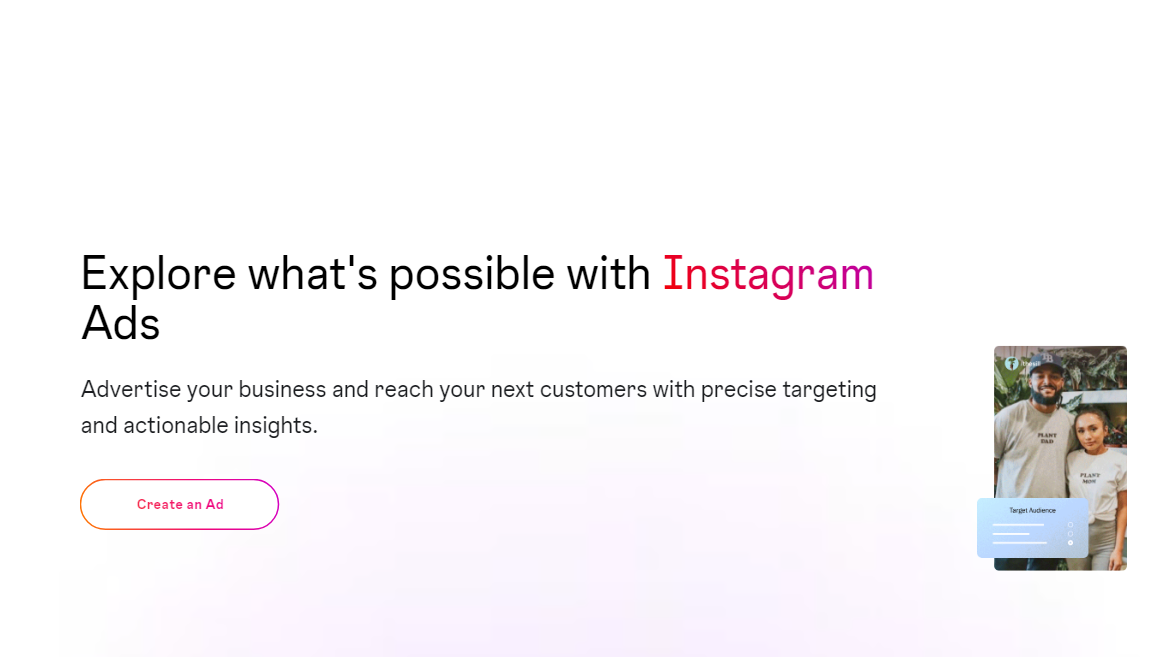
Almost all social media platforms have their own built-in marketing options. You can run paid advertising programs on Facebook, Instagram, X, LinkedIn, TikTok, Pinterest, Snapchat… The list goes on. if a platform is monetized, it will sell you ad space. Meet people where they are (literally) to expand your reach.
Social media ads aren't the cheapest option for marketing, but they have one major perk: you can usually choose the audience. Platforms like Facebook have access to all sorts of data that most of us aren't privy to, and this makes it easier for them to make sure your ads are seen by the right people. Narrowing down the audience can make your marketing efforts more effective.
Remember to try A/B testing here, too. Run different variations of your ads, changing things like headlines, images, product descriptions, or CTAs (calls to action) and see what works best. Consider things like cost-per-click (CPC) and cost-per-acquisition (CPA) to calculate your return on investment (ROI).
Hosting contests
Running contests on social media is a great way to drive traffic and boost your visibility. You can offer a prize and encourage people to enter the contest by tagging their friends or sharing your posts. In all honesty, there aren't many easier ways to get followers than by offering people free stuff, and more followers means more potential buyers.
If your whop has a free level, you can make signing up a requirement. This is a great gateway to people discovering your page and deciding to subscribe on a paid level. Even if it costs you a monthly subscription or two, you might win yourself a loyal customer from that day onward.
Working with influencers
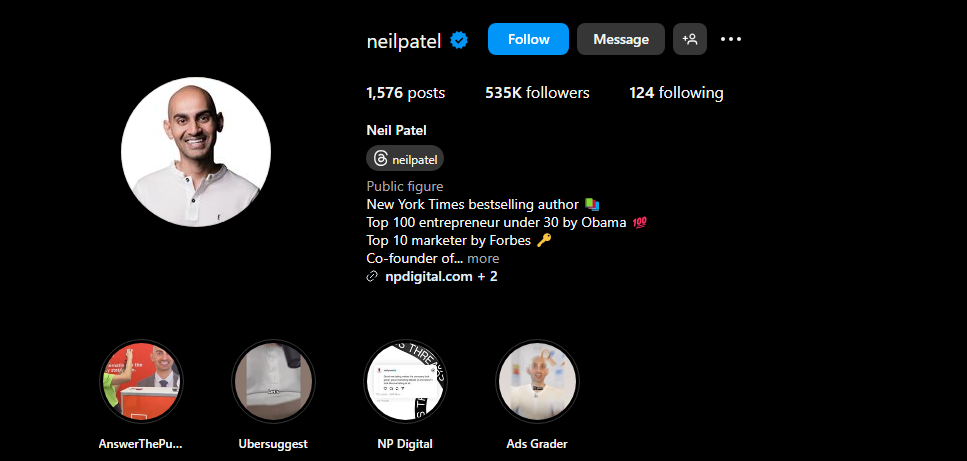
"Working with influencers" kind of sounds like I'm telling you to hire one of the Kardashians to advertise your whop, but don't worry—working with influencers can be affordable and great for your brand.
It's all about finding the right person and making the right deal. Influencers might be willing to work with you on a bartering contract, where you'll give them access to your whop or endorse them on your profile, and in return, they'll advertise your whop on their socials. More often than not, you'll be expected to pay a fee to get them to advertise your products.
Two things are crucial here:
- Pick an influencer who fully aligns with your values. Avoid problematic people at all costs—your brand image is at stake here.
- Target nano- and micro-influencers if you're starting out and don't have a marketing budget that's in the hundreds or even thousands.
Putting your link in your bio
If I had a penny for every influencer who told me to "click the link in my bio," I'd have enough pennies to fill a small jar. Still, you’ll hear it said a million times for a reason. Putting the link to your whop in your bio on social media is actually a legitimate marketing strategy.
People who see your social media content will go looking in your bio when they want more information. If your link isn’t already there, you’re just missing a fantastic way to funnel people to your Whop.
Leveraging trends
The algorithm is mighty, so feeding it the content that it wants can get you on For You pages and in front of eyes that would've never seen you otherwise.
Sure, you might have to put some fingers down or do a little dance, but sometimes you have to suffer for success. Jokes aside, leveraging trends while creating helpful and relevant content is the way to go.
If you can find trends that fit with your brand and make sense, jump on them. Going viral is never a guarantee, but even a moderately successful post is so worth it. Plus, it's free.
Engaging with your followers
Marketing isn't just about customer acquisition. Customer retention is, arguably, even more important—especially if you're running a subscription model and hoping to get some passive income.
Aside from everything we outlined above, remember to stay in touch with your followers. Reply to comments, answer questions, and chat in your whop whenever you can.
People are increasingly less interested in impersonal, one-size-fits-all content. They want real engagement, actionable tips from experts, and the ability to interact with their favorite creators. Thirty minutes per day can go a very long way here.
Paying attention to your existing followers is the best way to keep their follow. That retention can be vital to your bottom line.
Going live
Running live streams is a great way to get information out quickly, get your customers engaged and excited, and add value to your products. You can do this on social media, but you can also use the Video Calls app on your whop.
If you choose to stream on social media, don't forget to advertise it on your whop, too. Having a baseline of viewers will help you get on all sorts of explore pages, and that can get you even more viewers.
You can use these lives to make announcements, build hype for launches, or answer questions from your audience. They're just a good way to interact with people and foster a better connection with your customers.
Using a blog to market your whop
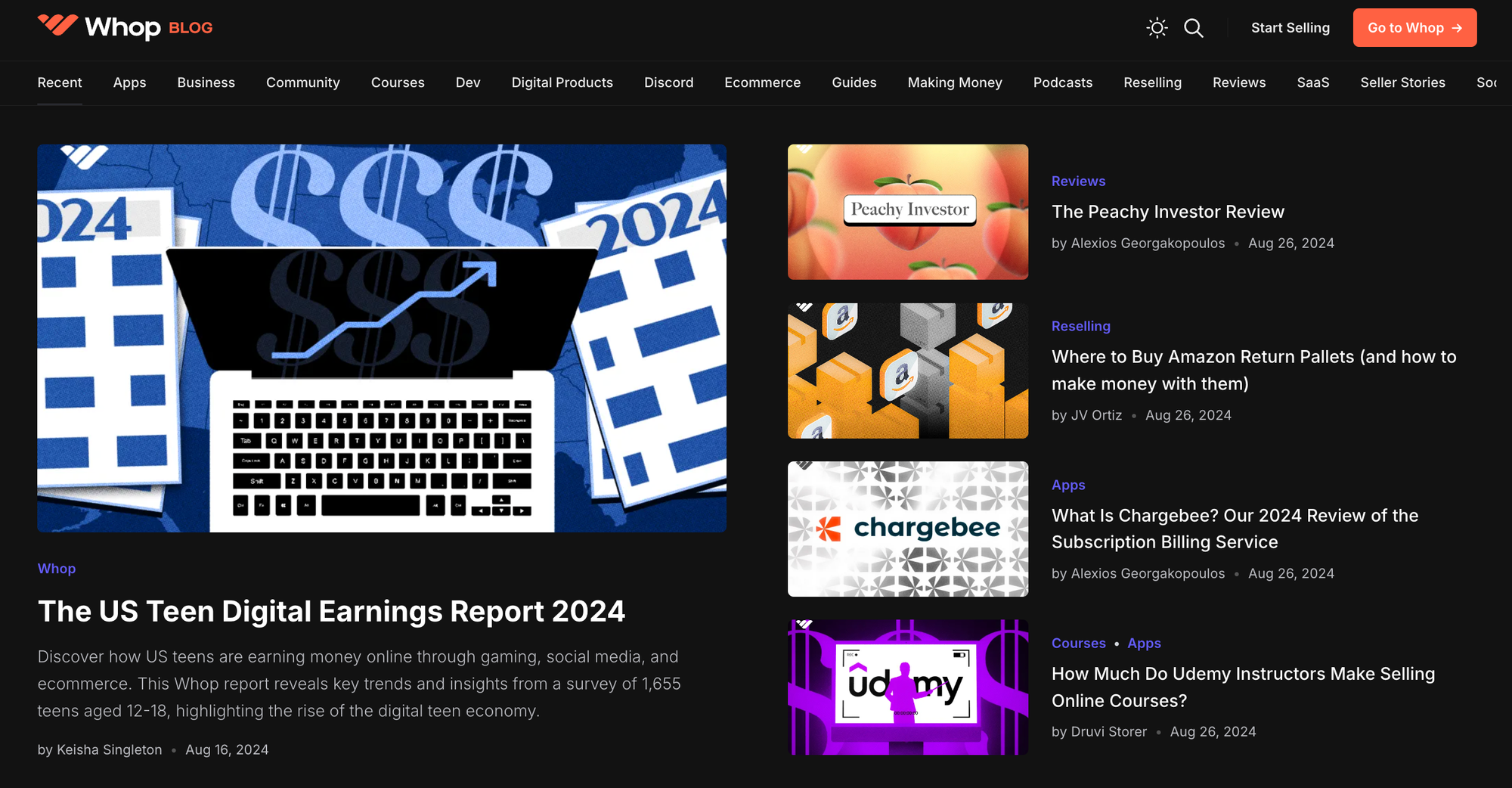
While it's totally possible to sell digital products without a website, having a blog alongside your whop is a good way to drive traffic to both. I'll explain.
Chances are that you're already leaning into various SEO strategies, such as using the right keywords, in your whop descriptions. However, doing the same thing with a blog puts you on a whole new map.
Optimizing your blog for search engines lets you attract potential customers who search for relevant topics. Writing blog posts involves doing some unpaid labor, that's true, but it can help you generate new leads and drive conversions.
To figure out what to write about, scroll back up to all your analysis and think about the pain points your customers might have. For example, if you're running a community for crypto traders, you can post useful insights regarding bear vs. bull market predictions or which platforms are the safest to use.
Your blog should serve as a funnel for your whop. Create helpful content, but make sure to always link back to your paid options and highlight the benefits of switching over to being a paying customer.
Don't forget to also try the following:
- Include clear CTAs to push people to check out your whop
- Reach out to other creators in your niche and offer to write them guest posts in exchange for a link to your whop
- Use your blog to build up a mailing list
- Set up a newsletter
- Promote your blog on your socials
- Repurpose and add to your blog content, then sell it on your whop
- Engage with your readers by responding to comments and questions
While it's true that running your blog is a fair amount of extra work, the benefits to marketing are always substantial. Word of warning: it may take a while before your blog truly takes off, so be patient and keep at it.
Expanding your reach with paid advertising
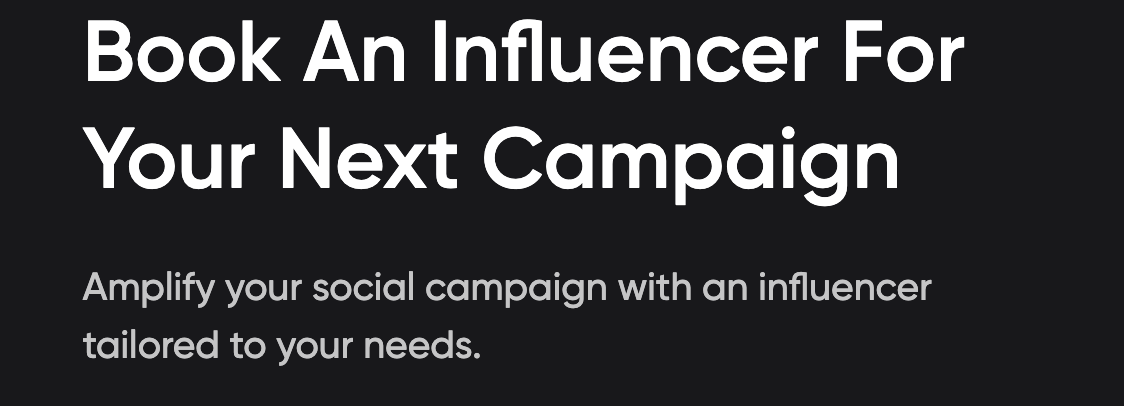
Running ads on social media can be effective, but it comes with one major downside—lots of people either use ad blockers or simply don't pay attention to ads. This means that while your ad is technically being viewed (and therefore paid for), it may not bring you much traffic.
Still, there are lots of ways to pay for ads and have them bring you good ROI. Some other options to explore include:
- Buy a slot in a popular newsletter. If your own mailing list isn't that broad yet (or you just want to expand), look for creators in your niche and reach out to them. Newsletters offer varying conversion rates, but even 2% on a mailing list of 100,000 people translates to a lot of new customers.
- Team up with influencers. Invite influencers with similar interests to try out your whop. This can be as little as one ad or a whole series of them. The downside? It's expensive. The upside? The right influencer can give you a lot of followers and customers in return.
- Sponsor a podcast. Listen to podcasts made by creators in your industry. Reach out to them and offer to sponsor an episode, in which case you'll get a fair bit of promo, or to buy a shout-out to your whop during an episode.
- Run banner ads. Buy ad space on websites that align well with your whop. Do this by reaching out to them directly or through platforms like BuySellAds and Mediavine.
- Team up with other whop owners. While this doesn't work if you're direct competitors, there's a lot of merit in teaming up with other whop creators. For example, if you're running a stocks trading community, team up with someone who's in crypto and sports betting—you have similar audiences and can benefit from mutual marketing.
- Sponsor events or webinars. If there are any upcoming events in your industry, consider pitching in and getting promoted in return. Better yet, try to get in as a speaker to build your rep as an expert and a creator.
Some of these options are definitely on the pricier side, but many of them can expose you (and your whop) to a much wider audience. Weigh in all the pros and cons before diving in, though.
Take Your Sales to the Next Level With Whop University

You're already on Whop, so you know what we're about. Our goal is to help you build a thriving online business that aligns with what you want. We know the ebb and flow of content creation, so as a creator, you get all the flexibility to scale up or down as much as you need.
Scaling up can be scary, though. Which pitfalls to avoid? Which opportunities to jump on?
How to find new customers, and how to evolve your whop to the point where it'll replace any full-time job you've ever held? (Yes, it's possible—many creators make a living just on Whop!)
We've got the answers, and we're here to share them. By joining Whop University, you'll get access to:
- Useful resources for new and seasoned creators
- Guides on how to make money online
- Ideas for side hustles
- Exclusive insights from Whop's top creators
- Access to the Whop community, where you can meet entrepreneurs like you
- Customer support, including live chat and our Genius Bar Zoom sessions
Joining Whop University is 100% free. Become a part of our community and evolve your whop like never before.



